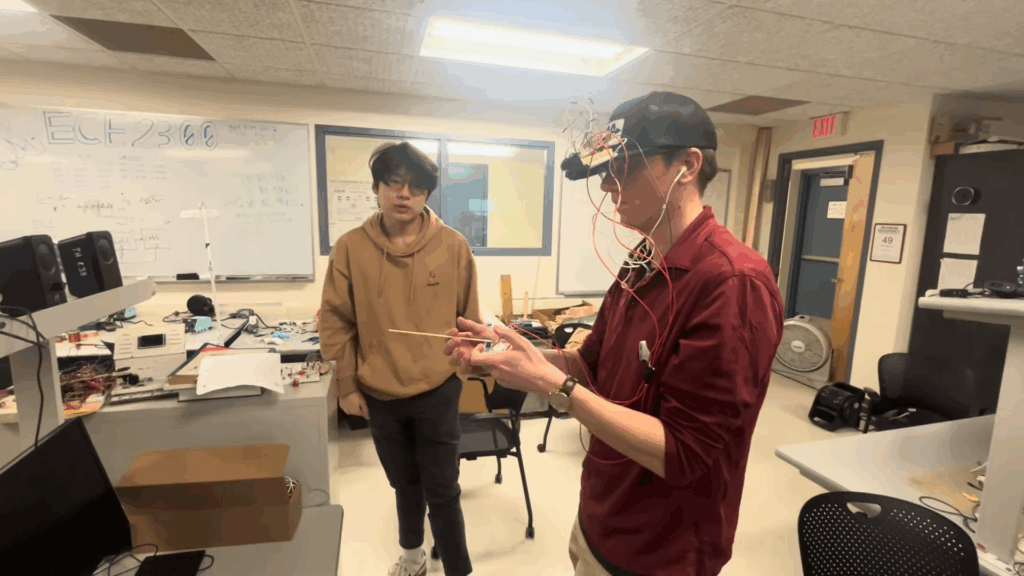
A team of students from the ECE4760 program at Cornell University has developed an innovative spatial audio system integrated into a hat. This project, led by students Anishka Raina, Arnav Shah, and Yoon Kang, allows the wearer to perceive the direction and proximity of nearby objects through audio feedback.
At the core of this build is a Raspberry Pi Pico, paired with a TF-Luna LiDAR sensor. This sensor identifies the distance to surrounding objects. Mounted on a hat, the sensor can be panned from side to side, enabling the wearer to scan their immediate area for obstacles effectively. While head tracking was not included in this design, a potentiometer is used to indicate the direction the wearer is facing as they perform the scan.
The data collected by the LiDAR sensor is processed by the Raspberry Pi Pico, which determines the range and location of nearby objects. It then generates a stereo audio signal that informs the wearer of the objects’ proximity and relative direction. This is achieved using a spatial audio technique known as interaural time difference (ITD). This approach augments the human auditory system, enhancing awareness of the environment.
The project exemplifies how technology can be used creatively to improve safety and sensory perception. By integrating complex systems into everyday items like hats, the students aim to offer a practical solution for individuals who need enhanced spatial awareness, particularly in crowded or unfamiliar environments.
Such innovative projects highlight the potential for academic research to lead to real-world applications. The team’s work not only showcases their technical skills but also their ability to think critically about how technology can serve human needs. As wearable technology continues to evolve, projects like this one pave the way for future advancements in personal safety and navigation.
In conclusion, the spatial audio hat developed by the Cornell students represents a significant step forward in the intersection of technology and daily life. It reflects a growing interest in enhancing personal safety through innovative design and engineering.







